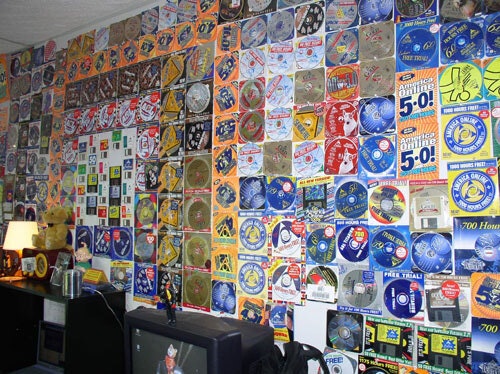Tedium - The Loophole 🥃
|
|
|
|
|
|
|
|
|
|
|
Older messages
The Hacker Ring 💍
Friday, November 8, 2024
Life with a hackable smart ring. Here's a version for your browser. Hunting for the end of the long tail • November 08, 2024 The Hacker Ring I bought a ring because I heard about it on Hacker News.
Know What You Control 🪰
Wednesday, November 6, 2024
How a bug-fixing endeavor gave me a good POV on election night. Here's a version for your browser. Hunting for the end of the long tail • November 06, 2024 Know What You Control If you're stuck
Everything Zen 😌
Monday, November 4, 2024
Tedium as an election chaos palate cleanser. Here's a version for your browser. Hunting for the end of the long tail • November 03, 2024 Today in Tedium: The odds are that, based on my recent
Pixel-Perfect? 🎨
Saturday, November 2, 2024
The Apple-Pixelmator deal makes sense. Just look at its feature set. Here's a version for your browser. Hunting for the end of the long tail • November 02, 2024 Pixel-Perfect? Apple makes a move to
Caught In The Middle 💸
Thursday, October 31, 2024
On rich guys, collateral damage, and The Washington Post. Here's a version for your browser. Hunting for the end of the long tail • October 30, 2024 Caught In The Middle The mess with Bezos and The
You Might Also Like
📧 Did you watch the FREE chapter of Pragmatic REST APIs?
Friday, February 28, 2025
Hey, it's Milan. 👋 The weekend is almost upon us. So, if you're up for some quality learning, consider watching the free chapter of Pragmatic REST APIs. Scroll down to the curriculum or click
Data Science Weekly - Issue 588
Thursday, February 27, 2025
Curated news, articles and jobs related to Data Science, AI, & Machine Learning ͏ ͏ ͏ ͏ ͏ ͏ ͏ ͏ ͏ ͏ ͏ ͏ ͏ ͏ ͏ ͏ ͏ ͏ ͏ ͏ ͏ ͏ ͏ ͏ ͏ ͏ ͏ ͏ ͏ ͏ ͏ ͏ ͏ ͏ ͏ ͏ ͏ ͏ ͏ ͏ ͏ ͏ ͏ ͏ ͏ ͏ ͏ ͏ ͏ ͏ ͏ ͏ ͏ ͏ ͏ ͏ ͏ ͏ ͏
💎 Issue 458 - Why Ruby on Rails still matters
Thursday, February 27, 2025
This week's Awesome Ruby Newsletter Read this email on the Web The Awesome Ruby Newsletter Issue » 458 Release Date Feb 27, 2025 Your weekly report of the most popular Ruby news, articles and
📱 Issue 452 - Three questions about Apple, encryption, and the U.K
Thursday, February 27, 2025
This week's Awesome iOS Weekly Read this email on the Web The Awesome iOS Weekly Issue » 452 Release Date Feb 27, 2025 Your weekly report of the most popular iOS news, articles and projects Popular
💻 Issue 451 - .NET 10 Preview 1 is now available!
Thursday, February 27, 2025
This week's Awesome .NET Weekly Read this email on the Web The Awesome .NET Weekly Issue » 451 Release Date Feb 27, 2025 Your weekly report of the most popular .NET news, articles and projects
💻 Issue 458 - Full Stack Security Essentials: Preventing CSRF, Clickjacking, and Ensuring Content Integrity in JavaScript
Thursday, February 27, 2025
This week's Awesome Node.js Weekly Read this email on the Web The Awesome Node.js Weekly Issue » 458 Release Date Feb 27, 2025 Your weekly report of the most popular Node.js news, articles and
💻 Issue 458 - TypeScript types can run DOOM
Thursday, February 27, 2025
This week's Awesome JavaScript Weekly Read this email on the Web The Awesome JavaScript Weekly Issue » 458 Release Date Feb 27, 2025 Your weekly report of the most popular JavaScript news, articles
💻 Issue 453 - Linus Torvalds Clearly Lays Out Linux Maintainer Roles Around Rust Code
Thursday, February 27, 2025
This week's Awesome Rust Weekly Read this email on the Web The Awesome Rust Weekly Issue » 453 Release Date Feb 27, 2025 Your weekly report of the most popular Rust news, articles and projects
💻 Issue 376 - Top 10 React Libraries/Frameworks for 2025 🚀
Thursday, February 27, 2025
This week's Awesome React Weekly Read this email on the Web The Awesome React Weekly Issue » 376 Release Date Feb 27, 2025 Your weekly report of the most popular React news, articles and projects
February 27th 2025
Thursday, February 27, 2025
Curated news all about PHP. Here's the latest edition Is this email not displaying correctly? View it in your browser. PHP Weekly 27th February 2025 Hi everyone, Laravel 12 is finally released, and








